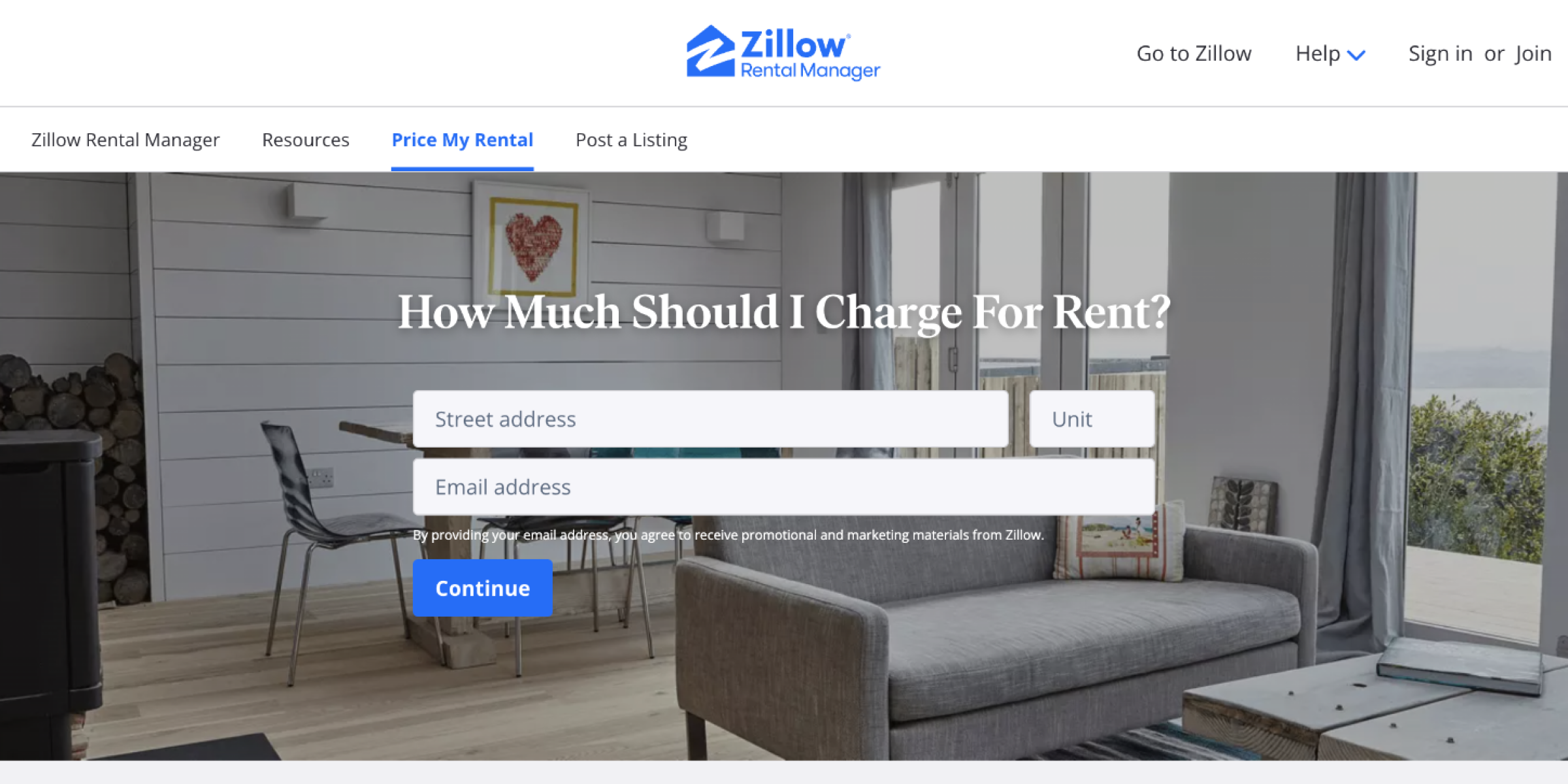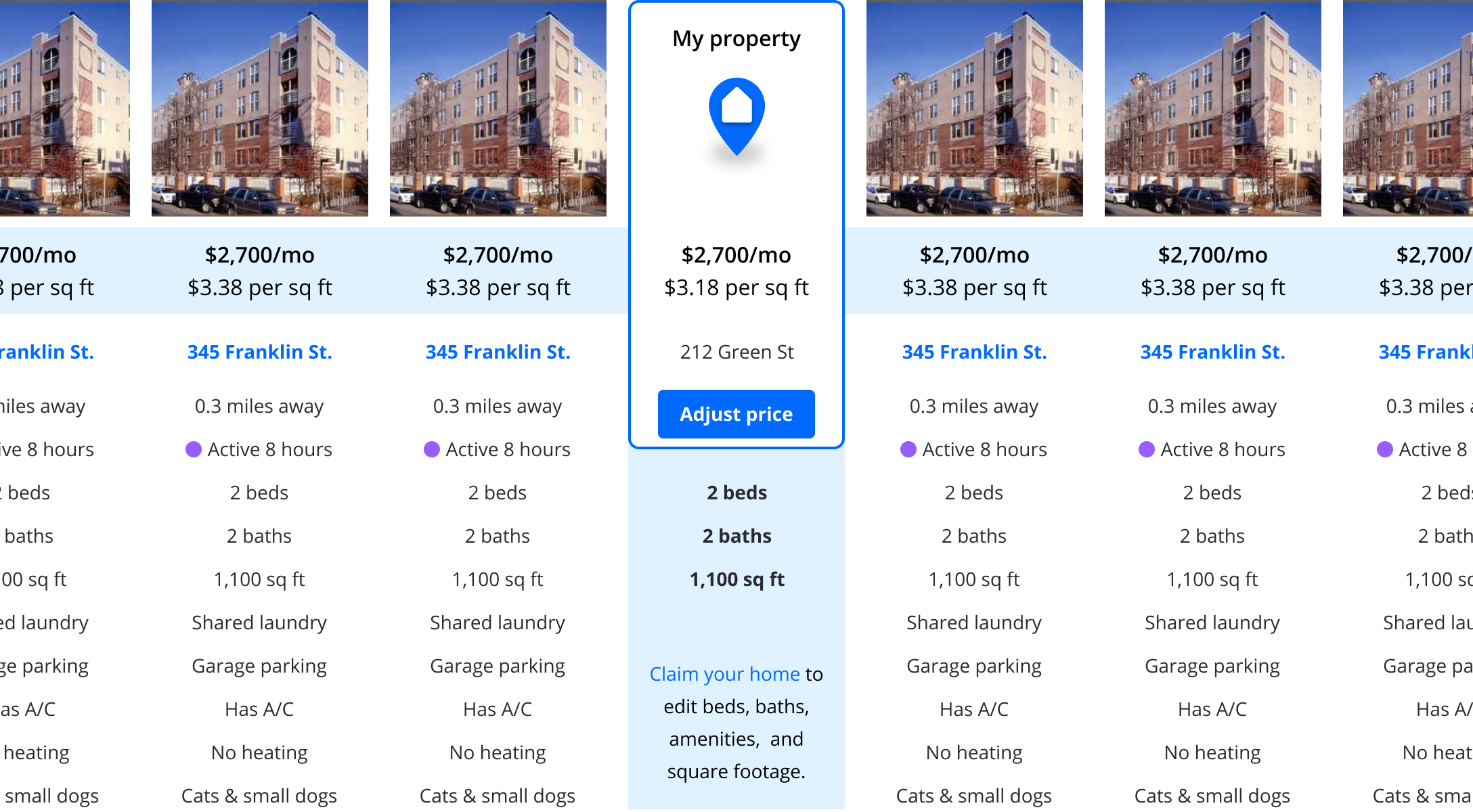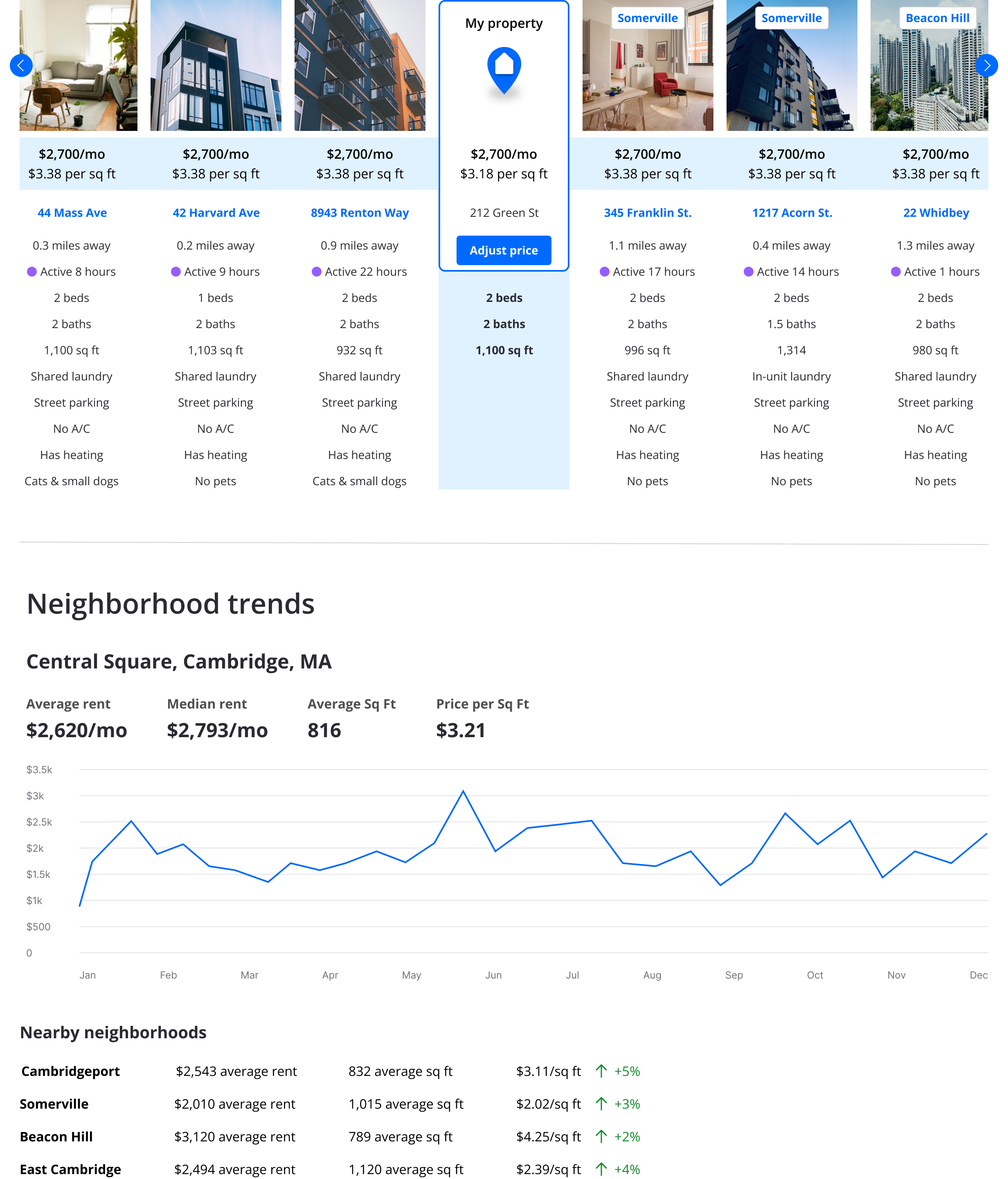Price My Rental
Navigating the world of rental pricing


Price My Rental (aka The Zillow Rent Estimate Calculator) is a tool that helps landlords determine how much they should charge for rent, drawing data from local properties to calculate a rate. The calculator is a free offering from the Rental Growth team designed to introduce prospective users to the Zillow Rental Manager ecosystem and encourage them to post their listing on the company’s platform.
I served as a contractor for Zillow’s Rental Growth team and unfortunately was not present to see these concepts come to life.
When I joined Zillow, Price My Rental was a relatively new feature. People were using it and it worked. But did it really? Were landlords finding value from the calculator? Did they find the page easy to navigate? Was it actually generating interest in Zillow Rental Manager or was the experience diminishing the Zillow brand?
With additional resources freeing up in the upcoming quarter, we needed to identify Price My Rental’s successes and failures in order to pitch ways to improve the tool and increase the sign-up rate for ZRM.
From a design standpoint, we wanted to know if landlords found PMR helpful in the early stages of putting their rental on the market.
From a business standpoint, we wanted to see an increase in landlords signing-up and posting their listings on ZRM.
With input from my manager and the UX research team, I wrote a usability testing script to assess the state of PMR. We asked 16 participants on UserTesting.com to take five minutes to use the calculator to determine an appropriate monthly rate for their rental.
After they completed the task, we followed up with specific questions about the accuracy of the data, the page’s functionality, and whether or not they found the tool helpful. We came away with these key takeaways.
To complement our user-testing data, I looked up similar tools in the space to roughly determine where we stood in terms of functionality and aesthetics. We were middle of the road, offering more than the barebones calculators like RedFin that offered minimal context, but not quite as much as the comprehensive reports that include market saturation and vacancy rates like RentSpree.

I say solution again with the caveat that my contract ended before we could put any of these ideas in motion. That being said, we had a slew of ideas we were excited to share with our higher-ups and the broader team.
As much as I love to promote the impact of good design, it can’t fix bad data. The users who expressed that they didn’t find the tool helpful pointed out low suggested rates, inaccurate square footage, and amenities that weren’t reflected in the final estimate. Zillow needs to provide better pricing recommendations while taking additional factors into account.
Realistically, even with better data and a smarter algorithm, PMR is never going to achieve an 100% success rate. But we can allow the user to adjust the estimate so that they can see the comparable rentals at their desired asking price. Our estimate may be off, but PMR can still serve as a tool to get a feel for the local market.

Throughout testing, participants scoured the page looking for ways to update their property details to correct inaccurate values. By allowing users to claim their property, not only can they update the details and get a more accurate estimate, it gives Zillow an opportunity to onboard a prospective user and showcase more of the ZRM platform.

Perhaps you have a couple of properties relatively near each other with significantly different rental rate recommendations. By highlighting average rents across neighborhoods, pricing trends, and comps across town, we can paint a more complete picture of the local market. This could aid both first-time landlords or prospective investors in the exploratory stage.
Additionally, in cases where a property may not have enough homes within the default 5-mile radius to generate an estimate, they could use adjacent neighborhoods as alternative reference points for pricing.

Less impactful but wouldn't-it-be-nice features that we pitched based on feedback:
We could've talked features and polish for weeks, but at the end of the day we had to sit down with the algorithm and data teams and discuss improving the estimates by making the algorithm more robust and the datasets more complete. Core functionality needs to be present in order to build trust.
There are going to be instances where your product falls short no matter what you do. Make it as easy as possible for the user to fill in the gaps and then thank them by delivering the experience as intended.
Back to top